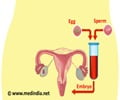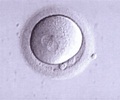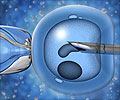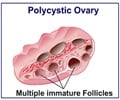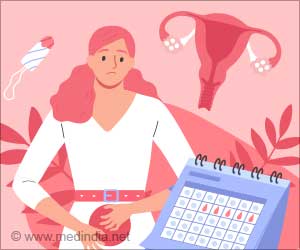Women labeled as ‘barren’ have hope with ‘Artificial Reproductive Techniques’ –Read about the inspiration and struggles of the Pioneer from South India.
Dr. Kamala Selvaraj MD, DGO, PhD is no ordinary Obstetrician and Gynecologist to be satisfied with handling routine cases of pregnancy and childbirth. Very early in her medical career, she had set her sights on higher achievements and wanted to give the ultimate satisfaction of motherhood to thousands of childless women. For- "Every child comes with the message that God is not yet discouraged of humankind." Rabindranath Tagore
Dr. Kamala Selvaraj has a list of firsts to her credit. To mention a few: –• She pioneered the first test tube baby in South India in 1990
• In 1992 - For the first time in India she made a surrogate baby possible
• In 1992 - Her clinic performed the first Sperm attached Oocyte Fallopian tube Transfer (SOFT)
• In 2008 - first Frozen Egg (Oocyte) baby,
• For the first time in South East Asia, under her care, twins were born to a patient with Mayer-Rokintansky-Kustner-Hauser Syndrome through a surrogate.
She has fulfilled the dream of thousands of couples in India and from countries like Dubai, UK, US, Australia, Sri Lanka and Canada to have children of their own.

Medindia spoke to the doctor at her sprawling GG Hospital in Chennai, India that also houses an Invitro Fertilization (IVF) lab, equipped with hi-tech state-of-art infrastructure and heard her speak on her struggles and achievements since her path- breaking foray into the field of Infertility.
Was there any particular trigger that set you exploring Assisted Reproductive Techniques (ART)?
I grew up in an extended family with parents and grandparents. I was very attached to my self-effacing grand aunt Chinnama who never really wished for anything in life, probably because she was childless. I often wondered what went wrong with her and if she or her husband ever consulted a doctor. When I started my Fertility Research Center and was grappling with many issues at the developmental stage she instilled great confidence in me. It saddened me when she died a couple of years before my first test tube baby was born.
It must have been an ordeal venturing into infertility treatment nearly 25 years ago. How did you manage?
Those were very difficult times and each day brought some new learning for me. I did most of everything by myself. For one I was working on a shoestring budget. Also I am extremely conscious about being perfect. I believe if you don’t follow a perfect protocol you can’t be successful at anything—leave alone making test tube babies!
The entire process involves a chain of controlled events like calculated stimulation for the development of Oocyte, exact timing to harvest the pre-ovulatory Oocyte and having a hi-tech lab with an excellent quality of culture medium, perfect protocol to harvest the best of the sperms and adding a calculated number of sperms to the harvested Oocytes, checking for the evidence of fertilization seen as two pro nuclei at the end of 16-18 hours and then gently placing the embryo into the uterine cavity and waiting for the next 11-12 days for the results with bated breath and butterflies in my stomach……. However, it was an experience of a lifetime leading to an ecstatic moment when I held my first test tube baby girl. All the tension and struggle seemed to vanish into thin air.
Where were you initiated into the nuances of ART procedures and how difficult was it putting your training into practice?
I come from a very traditional South Indian family and I had the support of my parents and my husband who is also a doctor. In response to my letter requesting guidance in the field of Invitro Fertilization and Embryo Transfer (IVT-ET), Dr. Carl Brown encouraged me to attend his workshop at Monash University, Melbourne, Australia in 1985. That was followed by attending other international workshops and conferences.
Learning the Gamete Intra Fallopian Transfer GIFT procedure in the US, breeding mice at home (only if the mice embryos grew up to the blastocyst stage in the culture medium would the culture medium be certified fit for human Oocytes), painstakingly setting up an Invitro Fertilization lab with the help of Dr. Farim Irani from Mumbai, the experimental period until the final breakthrough when the dream of a test tube baby came true…..Nothing came easy.

You have people coming from all corners of the world for treatment in your hospital. Roughly how much would an IVF procedure cost?
An entire IVF procedure including room charges, injections etc, would cost around 1 lakh to 1.5 lakh rupees (($2000-$3000/1400-3000pounds), depending upon the severity of the case.
What further progress are you looking at in this field of ART procedures?
We have just got our second pregnancy through Vitrification technique. We are now focusing on Rapid (Vitrification) and slow freezing of Oocytes, ovarian tissue freezing and we hope to do research in stem cell therapy.

The media is increasingly reporting a rise in infertility worldwide. Is it just hype or is infertility really on the rise? If so, for what possible reasons?
Stress and a hectic life are causing infertility worldwide. Besides, changing lifestyles where both men and women are job oriented, late marriages, family planning, medical termination of pregnancy, use of Intra Uterine device etc are some reasons. Then there are other factors such as the effect of pesticides, male factor, Polycystic Ovarian Syndrome, Premature Ovarian Failure and genetic factors.
Your career must be a sting of memorable moments……
Most definitely. The most poignant moments came after the tsunami that struck South India in 2004. Women, mostly from the lower socio-economic group who had been sterilized, lost all their children when the waves crashed into their homes. When tubal recanalization was attempted elsewhere and failed, the women were referred to our Fertility Center for ART. It was a moving experience to see the couples clinging to their newborn babies as if a new lease of life had been granted to them. As a policy ART treatment given to Tsunami victims is entirely free of cost in our hospital.
In a country like India that is still steeped in tradition in many parts and childlessness is still seen as a curse, Dr. Kamala Selvaraj stands tall giving hope to couples whose lives were “barren” until they met her. Medindia wishes her all success in her endeavors to boost infertility treatment in India.
Source-Medindia
Thilaka Ravi/L

